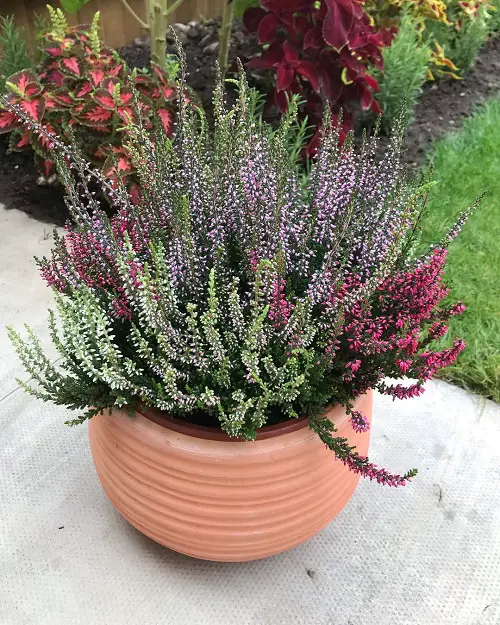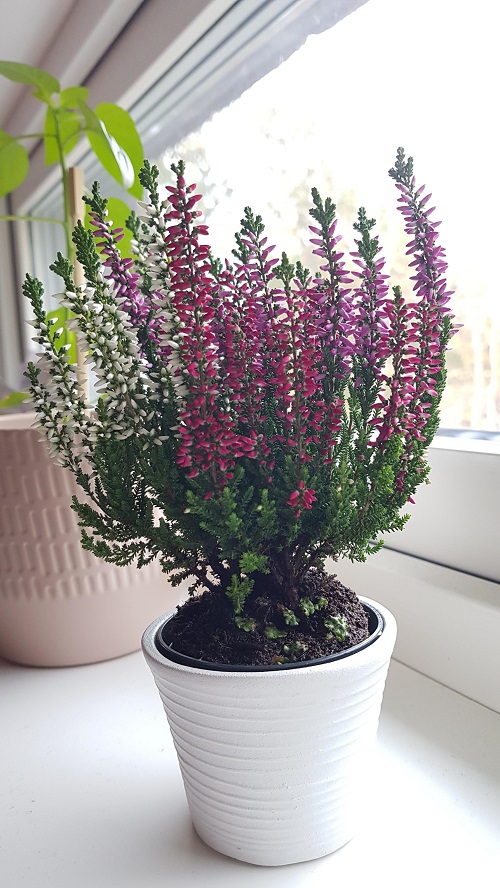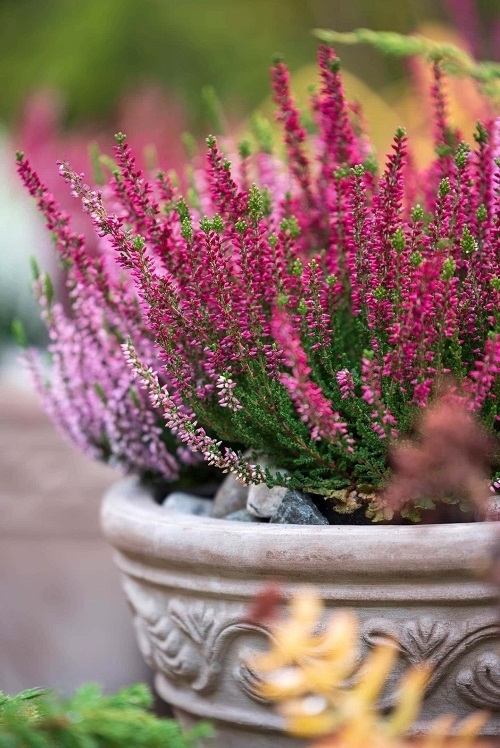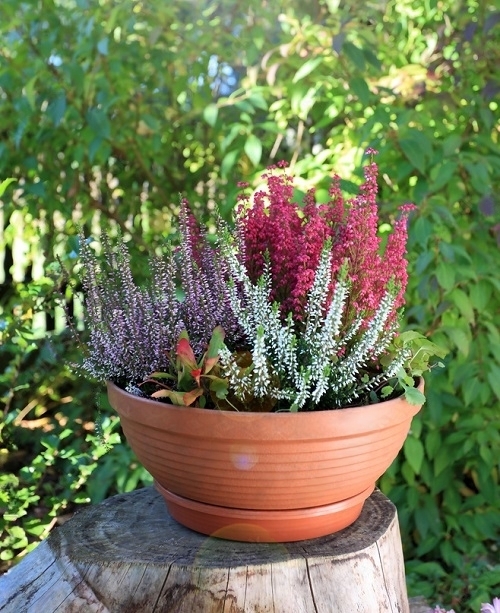Experience year-round beauty and easy elegance by Growing Heather in Pots! Read on and learn everything in detail!

Heather (Calluna vulgaris) is also known as ling or Scotch heather. This small woody perennial shrub produces plenty of purple-pink blooms from midsummer to early fall. It grows in cool areas in full sunlight and handles a range of soils if they are well-draining. You can grow this shrub in gardens, on the patio, front porch, and balcony. If short of space, growing heather in pots is an excellent alternative, learn the details in this post.
Propagating Heather Plant
Heather can be grown from seeds but cannot produce true plants. So it will be best to grow this plant from cuttings during summer and root them indoors in the fall and winter. Move the cuttings outdoors in the early spring.
Take a six-inch, non-woody, green stem with two leaves and make a cut below the node. Dip the cut ends in the rooting hormone. Now, fill a pot with one inch of organic matter or compost and vermiculite or soilless mix.
Make a hole in the soil and plant the cutting in it. Water the plant adequately and keep the pot in indirect light. Cover the pot with a plastic bag; this will provide humidity and improve rooting. Remove the cover for an hour daily to supply air circulation. The plant will take root in one month. After that, take off the plastic bag permanently. You can replant heather outdoors during spring after the danger of frost has gone.
Choosing a Container for Heather

Choose a pot with a diameter of at least 8-12 inches (20-30 cm). Make sure the pot has drainage holes to prevent waterlogging.
Requirements for Growing Heather in Pots

Sunlight
Heather plants flowers profusely in full sunlight in zones 4 and 5. While in zone 6, the plant will prefer afternoon shade.
Soil
Use well-draining, sandy soil. It grows in more acidic, peaty, moorlands. Heathers do not require fertile soil, can grow in poor soil, and can handle salt spray.
Water
Water regularly when plants are young. Heather needs one inch of water per week. When established, the plant has standard watering needs in Zone 4 but will need more frequent watering in warm zones.
Temperature and Humidity
This plant appreciates moist and cool climates. The evergreen leaves change the color in cool temperatures. Heather is hardy in zones 5-7 but may grow with protection and survive colder regions up to zone 3. It does not perform well in hot, humid places like the southern U.S.
Heather Care in Pots
Fertilizer
Potted heathers require fertilizer in the growing season; select a plant food formulated for ericaceous plants. Follow the instructions on the package for dosage.
Repotting
Repot heather in a wider, larger, one size bigger container than the current one with sufficient drainage holes in the bottom. You can use clay pots. Keep the plant at the same depth as the nursery pot or as deep as the root ball.
Overwintering
Heather is a hardy plant, but potted heathers need extra care in colder areas like Zone 4 or farther north. Wrap the pot with foam for insulation, including the bottom, and cover the plant with a thick layer of straw. For smaller pots, bring them indoors and place them near a window with indirect sunlight or under a grow light.
Pruning
Prune the plant in early spring to boost the fast growth. Mature plants become leggy, so trim them to keep them bushier and allow compact growth in pots.
Pests and Diseases
Heather can get powdery mildew and root rot, but you can prevent these problems. Powdery mildew doesn’t kill the plant but leaves a white, dusty layer on its leaves. To prevent it, avoid watering from above and prune your plant every spring to improve airflow. If your heather gets powdery mildew, you can use a fungicide or a baking soda solution.
Root rot happens when the soil stays too wet, especially if a fungus called Phytophthora is present. This is usually not a problem if the soil drains well, so it is essential to plant heather in soil that drains quickly.





HI:
I just received a beautiful little heather as a gift. I would like to keep it as a potted indoor plant. I have a good indoor sun location. Here is my question… I read that this plant needs to be kept moist in acidic soil to be successful. I can manage the re-pot with the soil, BUT, would it be appropriate to re-pot in an African violet, bottom water planter?
Thank you!
Eric